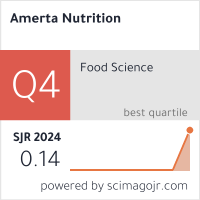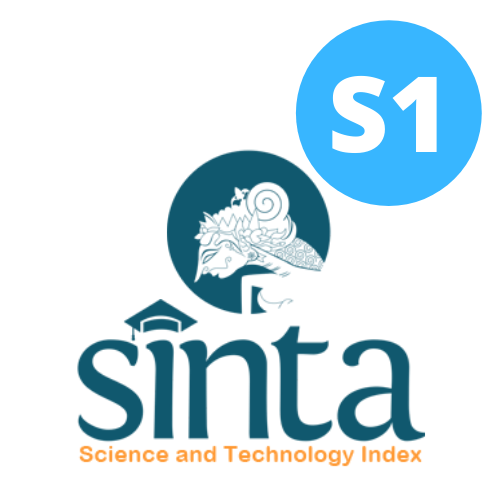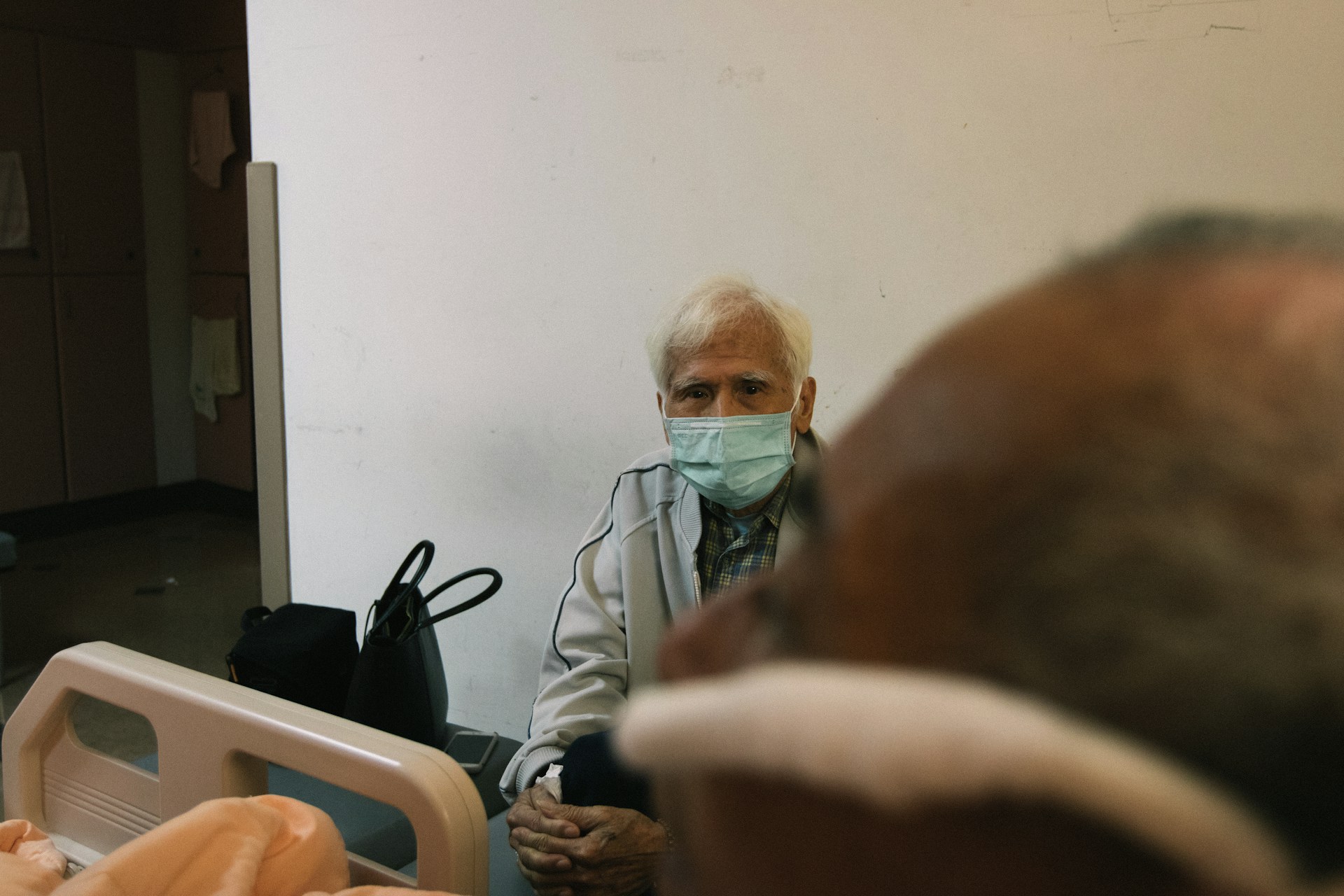Facilitating Factors of Mothers’ Good Adherence to Four National Nutrition Programs in Indonesia
Faktor yang Memfasilitasi Ibu dengan Kepatuhan yang Baik dalam Melaksanakan Empat Program Gizi Nasional di Indonesia

Background: Mothers’ compliance with national nutrition programs during the first 1000 days of life is crucial to optimal child growth and development. However, national surveys have revealed low levels of compliance, suggesting challenges faced by mothers. Thus, understanding the facilitating factors of mother’s consistent good compliance is important.
Objectives: To explore the facilitating factors of mothers’ good compliance with four national nutrition programs during the first 1000 days of life.
Methos: Of the 48 mothers of 6-23-month-old children interviewed in this study, 10 demonstrated consistent compliance with the recommended maternal iron and folic acid (IFA) supplementation, breastfeeding, complementary feeding, and vitamin A capsule (VAC) supplementation programs. In-depth exploration and analysis were carried out on the 10 mothers, focusing on the roles of health staff, information exposure, knowledge, and family support.
Results: All mothers had a strong initiative to seek information from various sources, including healthcare staff, the mother and child health book, and Internet (among urban mothers), irrespective of their socio-demographic backgrounds. Frequent information exposure resulted in good knowledge, except on VAC supplementation. Healthcare staff, particularly midwives, played significant roles in mothers’ compliance to IFA supplementation and breastfeeding, but much less for complementary feeding practices. The role of Posyandu cadres was limited to the dissemination of VAC supplementation schedules. Support from family members were observed in all programs, mainly in providing information and maintaining motivation.
Conclusions: Information exposure and family support were key to mothers’ good compliance. The roles of healthcare staff, particularly in providing complementary feeding information, should be strengthened.
Likhar, A. & Patil, M. S. Importance of maternal nutrition in the first 1,000 days of life and its effects on child development: a narrative review. Cureus 14 (2022). DOI: 10.7759/cureus.30083.
World Health Organization. Guideline Daily Iron Supplementation in Adult Women and Adolescent Girls. (Geneva, 2016).
World Health Organization. WHO Guideline for Complementary Feeding of Infants and Young Children 6-23 Months of Age. (Geneva, 2023).
UNICEF and World Health Organization. Indicators for Assessing Infant and Young Children Feeding: Definitions and Measurement Methods. (Geneva, 2021).
World Health Organization. Guideline: Vitamin A Supplementation in Infants and Children 6-59 Months of Age. (Geneva, 2011).
Black, R. et al. Executive summary of The Lancet maternal and child nutrition series. Maternal and Child Nutrition Study Group (eds), Maternal and Child Nutrition, 1-12 (2013). DOI: 10.1016/S0140-6736(13)60937-X.
Bhutta, Z. A. et al. Evidence-based interventions for improvement of maternal and child nutrition: what can be done and at what cost? The lancet 382, 452-477 (2013). DOI: 10.1016/S0140-6736(13)60996-4 .
Peraturan Presiden Nomor 71 Tahun 2021 tentang Percepatan Penurunan Stunting. (2021).
Kementerian Kesehatan RI. Panduan Manajemen Terintegrasi Suplementasi Kapsul Vitamin A. Jakarta. (Jakarta, 2016).
Kementerian Kesehatan RI. Buku Saku Pencegahan Anemia pada Ibu Hamil dan Remaja Putri. (Jakarta, 2023).
Kementerian Kesehatan RI. Panduan Pengelolaan Posyandu Bidang Kesehatan. (Jakarta, 2023).
Kementerian Kesehatan Republik Indonesia. Riset Kesehatan Dasar 2010. (Jakarta, 2010).
Kementerian Kesehatan Republik Indonesia. Riset Kesehatan Dasar 2013. (Jakarta, 2013).
Kementerian Kesehatan Republik Indonesia. Riset Kesehatan Dasar 2018. (Jakarta, 2018).
Kementerian Kesehatan Republik Indonesia. Survei Kesehatan Indonesia Tahun 2023. (Jakarta, 2023).
Kementerian Kesehatan Republik Indonesia. Buku Saku Hasil Survei Status Gizi Indonesia (SSGI) Kabupaten/Kota Tahun 2021. (Jakarta, 2021).
Kementerian Kesehatan Republik Indonesia. Buku Saku Hasil Survei Status Gizi Indonesia (SSGI) 2022. (Jakarta, 2022).
Creswell, J. Clark, W. Designing and conducting Mixed Methods Research. (Sage Publications, Inc, 2007).
Hector, D., King, L., Webb, K. & Heywood, P. Factors affecting breastfeeding practices. Applying a conceptual framework. New South Wales public health bulletin 16, 52-55 (2005). DOI: 10.1071/nb05013.
Wiradnyani, L. A. A., Khusun, H., Achadi, E. L., Ocviyanti, D. & Shankar, A. H. Role of family support and women’s knowledge on pregnancy-related risks in adherence to maternal iron–folic acid supplementation in Indonesia. Public health nutrition 19, 2818-2828 (2016). DOI: 10.1017/S1368980016001002.
Armini, N. K. A. & Nastiti, A. A. Adherence to iron supplementation amongst pregnant mothers in Surabaya, Indonesia: Perceived benefits, barriers and family support. nursing 2352, 0132 (2018). DOI: 10.1016/j.ijnss.2018.07.002.
Paramashanti, B. A., Dibley, M. J., Huda, T. M., Prabandari, Y. S. & Alam, N. A. Factors influencing breastfeeding continuation and formula feeding beyond six months in rural and urban households in Indonesia: a qualitative investigation. International Breastfeeding Journal 18, 48 (2023). doi.org/10.1186/s13006-023-00586-w.
Brabers, A. E., van Dijk, L., Groenewegen, P. P. & de Jong, J. D. Do social norms play a role in explaining involvement in medical decision-making? The European Journal of Public Health 26, 901-905 (2016). DOI: 10.1093/eurpub/ckw069.
Greenaway, E. S., Leon, J. & Baker, D. P. Understanding the association between maternal education and use of health services in Ghana: exploring the role of health knowledge. Journal of biosocial science 44, 733-747 (2012). DOI: 10.1017/S0021932012000041.
Sriraman, N. K. & Kellams, A. Breastfeeding: What are the barriers? Why women struggle to achieve their goals. Journal of women's health 25, 714-722 (2016). DOI: 10.1089/jwh.2014.5059.
Mekonnen, M. et al. Infant and young child feeding practice among mothers of children age 6 to 23 months in Debrelibanos district, North Showa zone, Oromia region, Ethiopia. PloS one 16, e0257758 (2021). DOI: 10.1371/journal.pone.0257758.
Chaimiso, A. N., Lodebo, T. M., Gebretsadik, M. T. & Sadore, A. A. Compliance to National infant and young child feeding recommendation and associated factor among mothers of children 6-23 months-of-age in Gombora District, Southern Ethiopia: community based cross sectional study. Int J Clin Experiment Med Sci 3, 5 (2017). DOI: 10.11648/j.ijcems.20170301.12.
Nirmala, I. R., Februhartanty, J. & Wiradnyani, L. A. A. Maternal attributes are positively associated with feeding practices of children aged 2-5 years in West Java, Indonesia. Malaysian Journal of Nutrition 22 (2016).
Lutter, C. K. et al. Key principles to improve programmes and interventions in complementary feeding. Maternal & child nutrition 9, 101-115 (2013). DOI: 10.1111/mcn.12087.
Hardinsyah, H. Review on Determinant Factors of Dietary Diversity. JURNAL GIZI DAN PANGAN 2, 55-74 (2007). DOI: 10.25182/jgp.2007.2.2.55-74.
Rollins, N. C. et al. Why invest, and what it will take to improve breastfeeding practices. Lancet 387, 491-504 (2016). DOI: 10.1016/S0140-6736(15)01044-2.
Ekawidyani, K. R. et al. Child Feeding Pattern During Transitional Period (6-8 Months) in Jonggat Sub District, Central Lombok, West Nusa Tenggara. Jurnal Gizi dan Pangan 10 (2015). doi.org/10.25182/jgp.2015.10.2.%25p.
Kulkarni, S., Frongillo, E. A., Cunningham, K., Moore, S. & Blake, C. E. Women's bargaining power and child feeding in Nepal: Linkages through nutrition information. Maternal & child nutrition 16, e12883 (2020). DOI: 10.1111/mcn.12883.
Mostafa, I. et al. Factors affecting low coverage of the vitamin A supplementation program among young children admitted in an urban diarrheal treatment facility in Bangladesh. Global Health Action 12, 1588513 (2019). DOI: 10.1080/16549716.2019.1588513.
Nyhus Dhillon, C., Subramaniam, H., Mulokozi, G., Rambeloson, Z. & Klemm, R. Overestimation of vitamin a supplementation coverage from district tally sheets demonstrates importance of population-based surveys for program improvement: lessons from Tanzania. PLoS One 8, e58629 (2013). doi.org/10.1371/journal.pone.0058629.
UNICEF. Southeast Asia regional report on maternal nutrition and complementary feeding. UNICEF East Asia and the Pacific Regional Office (2021).
Unicef. Improving child nutrition: the achievable imperative for global progress. New York: UNICEF 114 (2013).
Hamze, L., Carrick-Sen, D., Zhang, Z., Liu, Y. & Mao, J. Maternal attitude towards breastfeeding: A concept analysis. British Journal of Midwifery 26, 462-469 (2018). DOI: 10.12968/bjom.2018.26.7.462.
Pakilaran, G., Rasni, H., Nur, K. R. M. & Wijaya, D. Family support on exclusive breastfeeding in babies aged 0-6 months in Indonesia: Literature Review. Vol. 2 No. 2 (2022): June 2022. DOI: https://doi.org/10.53713/nhs.v2i2.53.
Nickerson, L. E., Sykes, A. C. & Fung, T. T. Mothers’ experience of fathers’ support for breast-feeding. Public Health Nutrition 15, 1780-1787 (2012). DOI: 10.1017/S1368980011003636.
Ratnasari, D. et al. Family support and exclusive breastfeeding among Yogyakarta mothers in employment. Asia Pacific journal of clinical nutrition 26 (2017). DOI: 10.6133/apjcn.062017.s8.
Copyright (c) 2025 Amerta Nutrition

This work is licensed under a Creative Commons Attribution-ShareAlike 4.0 International License.
AMERTA NUTR by Unair is licensed under a Creative Commons Attribution-ShareAlike 4.0 International License.
1. The journal allows the author to hold the copyright of the article without restrictions.
2. The journal allows the author(s) to retain publishing rights without restrictions
3. The legal formal aspect of journal publication accessibility refers to Creative Commons Attribution Share-Alike (CC BY-SA).
4. The Creative Commons Attribution Share-Alike (CC BY-SA) license allows re-distribution and re-use of a licensed work on the conditions that the creator is appropriately credited and that any derivative work is made available under "the same, similar or a compatible license”. Other than the conditions mentioned above, the editorial board is not responsible for copyright violation.












































